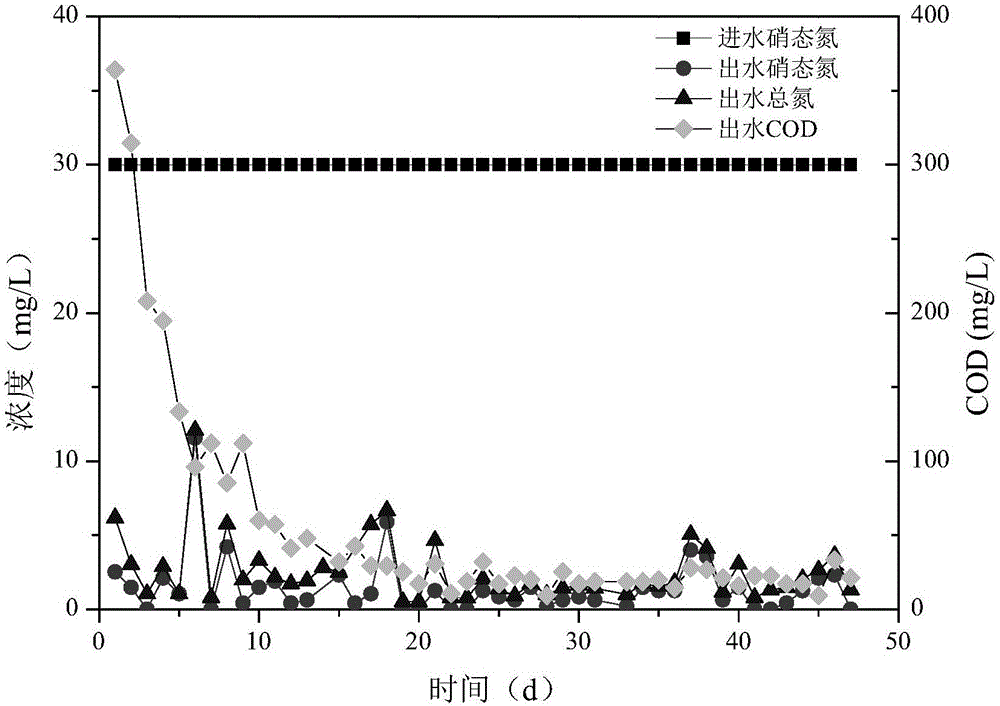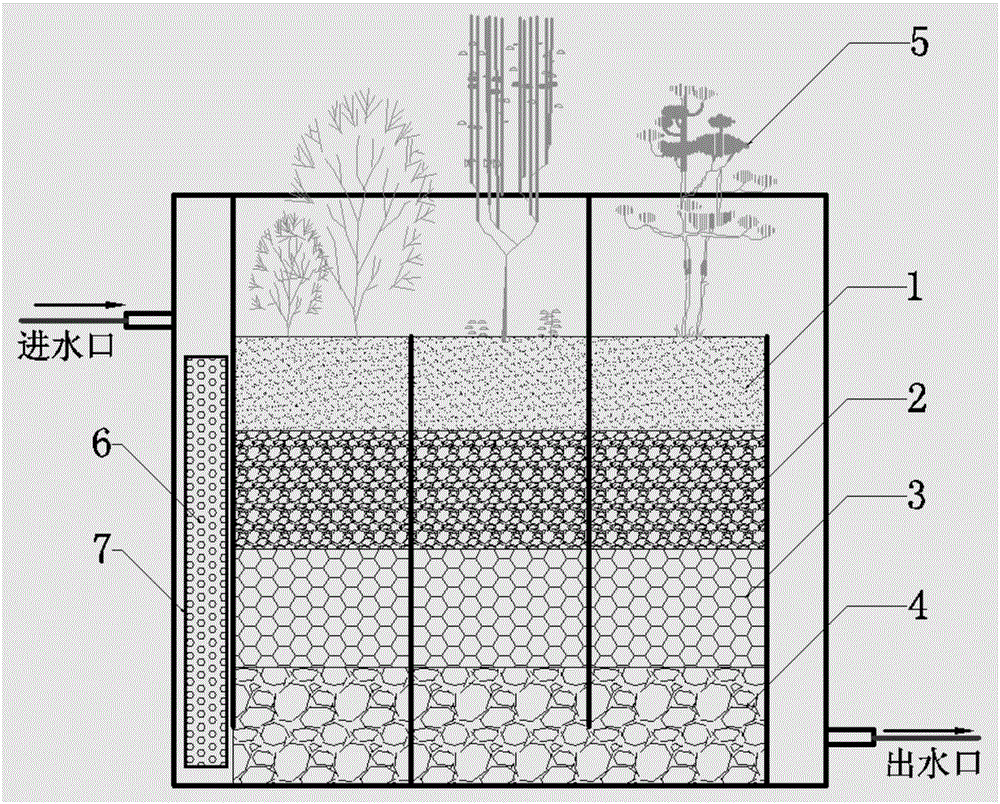Method for enhancing biological denitrogenation effect of constructed wetland
A technology for artificial wetlands and biological denitrification, applied in chemical instruments and methods, biological water/sewage treatment, special compound water treatment, etc., can solve agricultural waste and treatment process without integrated design, slow release rate and denitrification Difficult to match carbon source demand, complex process operation and management, etc., to achieve stable and controllable operation, saving denitrification effect, and reducing sludge production
- Summary
- Abstract
- Description
- Claims
- Application Information
AI Technical Summary
Problems solved by technology
Method used
Image
Examples
specific Embodiment
[0029] In this example, corn cob was selected as the slow-release carbon source, and the stable slow-release rate of corn cob measured by static test was about 1 mg COD / (g·d). After the nitrate nitrogen is added to the effluent of the campus domestic sewage through the membrane bioreactor (because the concentration of nitrate nitrogen in the effluent after domestic sewage treatment is less than 5mg / L, in order to make the treatment effect of the constructed wetland more obvious, add 25mg / L to the effluent L of potassium nitrate) as the influent of the constructed wetland. The influent water volume of the constructed wetland is 10L / d, the influent COD is less than 30mg / L, the nitrate nitrogen concentration is about 30mg / L, and the influent ammonia nitrogen is less than 1.5mg / L. The design of this embodiment adopts COD:TN=6 to add the slow-release carbon source, that is, add 1800g corncob as the slow-release carbon source, but the dosing device can only accommodate 400g corncob,...
PUM
| Property | Measurement | Unit |
|---|---|---|
| pore size | aaaaa | aaaaa |
Abstract
Description
Claims
Application Information
 Login to View More
Login to View More - R&D
- Intellectual Property
- Life Sciences
- Materials
- Tech Scout
- Unparalleled Data Quality
- Higher Quality Content
- 60% Fewer Hallucinations
Browse by: Latest US Patents, China's latest patents, Technical Efficacy Thesaurus, Application Domain, Technology Topic, Popular Technical Reports.
© 2025 PatSnap. All rights reserved.Legal|Privacy policy|Modern Slavery Act Transparency Statement|Sitemap|About US| Contact US: help@patsnap.com


